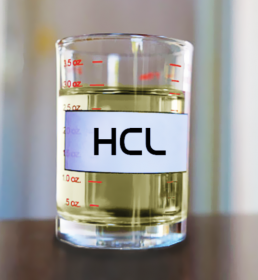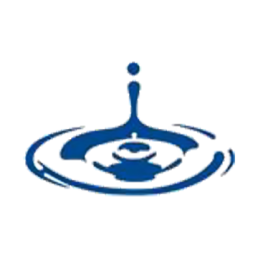
With the advent of mass production during the Industrial Revolution, hydrochloric acid was used in the chemical industry as a pure reagent in the large-scale production of vinyl chloride for VVC plastics and MDI / TDI for polyurethane. It also has many small-scale uses, including housekeeping, making gelatin and other food additives, descaling, and tanning. About 20 million tons of hydrochloric acid are produced annually in the world.
Jabir bin Hayyan is also said to have discovered the acid. This acid is used for scaling from different levels. Hydrochloric acid is also present in the stomach and helps digest food. Inhalation of hydrochloric acid vapor is dangerous and damages the respiratory system. If a drop of it drips on the skin of the body, blisters can form even deep wounds. In such cases, the acid effect should be neutralized immediately with a dilute alkaline solution such as baking soda.
Due to the need to maintain environmental health along with production activities, this production unit with an annual capacity of more than 70,000 tons, converts the exhaust gases of factory furnaces in a chemical process into hydrochloric acid with a quality of 33%. Hydrochloric acid or salt ink (HCI) with a purity of 30-33% (w) is a by-product in the process of producing potassium sulfate and due to its independence from the general market policies and industries that produce this substance as the main product, the time of independence In determining the price and sales policy for this product, it is provided to the consumer industries. It should be noted that due to the Mannheim production method and the lack of metal in the structure of production reactors, it is possible to produce quality acid with the lowest percentage of metal contamination.
In parallel with the production of potassium sulfate chemical fertilizer, the company has also sent the by-product of hydrochloric acid to meet the needs of manufacturing companies such as steelmakers, gelatin producers, detergents, oil well drilling, and other consumers.
production
Hydrochloric acid is prepared by dissolving hydrogen chloride in water. Hydrogen chloride can be produced in a variety of ways, and this means that there are many ways to make hydrochloric acid. Large-scale production of hydrochloric acid is almost always done on an industrial scale with other materials.
Properties of hydrochloric acid
The physical properties of hydrochloric acid, such as boiling point and melting point, density, and pH depend on the concentration or molarity of HCl in aqueous solution, ranging from water properties at concentrations close to 0% acid to heater values of hydrochloric acid at more than 40%.
Hydrochloric acid as a binary mixture of HCl and H2O azeotropes has a constant boiling point at 20.2% HCl and 108.6 ° C (227 ° F). Four eutectic points of crystallization constant for hydrochloric acid, between the crystalline forms HCI.H2O (٪ 60 HCI) and HCI.2H2O (51% HCI) and HCI.3H2O (41% HCI) and HCI.6H2O (25% HCI) and There is ice (0% HCI). There is also a fixed point of 24.8% between ice and HCI.3H2O crystal.
Some applications of hydrochloric acid
– In steel acid washing
– In the production of organic compounds
– In the production of inorganic compounds
– In control (PH) and neutralization
– In the reconstruction of ion exchangers
Some of our customers:
Hydrochloric Acid
Hydrochloric acid is a clear, colorless solution with a very pungent odor of hydrogen chloride (HCl) in water.
It is a very corrosive and strong mineral acid with many industrial uses. Hydrochloric acid is found naturally in stomach acid. The pH of this acid is between 0 and 2.
Hydrochloric acid has long been known as salicylic acid, muriatic acid, and salt ink, and is derived from vitriol (sulfuric acid) and common salt.
Free hydrochloric acid was first officially introduced in the 16th century by Andreas Libavius. Later, it was used by chemists such as Johann Rudolf Glaber, Joseph Priestley, and Humphrey Davy in their scientific research.








